

9 Traits of Sympathetic Characters via. Donald Maass Wisdom: Cultivate Reader Interest Through Unexpected Emotions - WRITERS HELPING WRITERS™WRITERS HELPING WRITERS™ Recently I was at a workshop with Donald Maass and the topic of Emotional Writing came up.
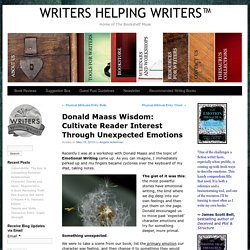
As you can imagine, I immediately perked up and my fingers became cyclones over the keyboard of my iPad, taking notes. The gist of it was this: the most powerful stories have emotional writing, the kind where we dig deep into our own feelings and then put them on the page. Donald encouraged us to move past ‘expected’ character emotions and try for something deeper, more primal. 11 Secrets to Writing Effective Character Description.
The following is an excerpt from Word Painting Revised Edition by Rebecca McClanahan, available now!

The characters in our stories, songs, poems, and essays embody our writing. They are our words made flesh. Sometimes they even speak for us, carrying much of the burden of plot, theme, mood, idea, and emotion. Confessions of an Opinionated Book Geek - Writing Tips #85: Nine Kick-Ass Excercises to Find... What I Learned Writing Dreamlander: 6 Types of Courageous Characters.
What’s the secret to creating characters readers love?
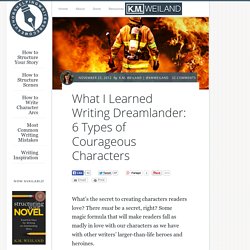
The Four Cornerstones of Strong Characters - Writingeekery. Writing The Perfect Flaw - Writingeekery. Getting to the Core of Character Motivation. Today’s guest post is the first of two from author Becca Puglisi.

With her blogging partner, Angela Ackerman, she has written three essential resource books for fiction writers that I can’t recommend enough. Last year they released The Emotion Thesaurus to great acclaim, and now they have followed through with the release of the companion books The Positive Trait Thesaurus and The Negative Trait Thesaurus. Because I feel the information they expound on in these books is so important for novelists to understand and master, I asked Becca to share some of the material from these two new releases with the readers of Live Write Thrive. 5 Ways to Create Conflict in Your Story. Conflict drives a story.
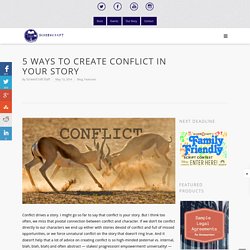
I might go so far to say that conflict is your story. But I think too often, we miss that pivotal connection between conflict and character. If we don’t tie conflict directly to our characters we end up either with stories devoid of conflict and full of missed opportunities, or we force unnatural conflict on the story that doesn’t ring true. Hidden Emotions: How To Tell Readers What Characters Don’t Want To Show - WRITERS HELPING WRITERSWRITERS HELPING WRITERS. One of the struggles that comes with writing is when a character feels vulnerable and so tries to hide their emotions as a result.
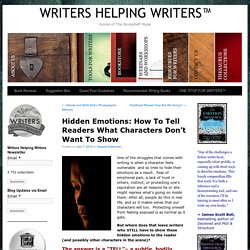
Fear of emotional pain, a lack of trust in others, instinct, or protecting one’s reputation are all reasons he or she might repress what’s going on inside them. After all, people do this in real life, and so it makes sense that our characters will too. Let Me Explain to You a Thing. Plotting the Non-Plot-Driven Novel. Have you ever grown impatient with a novel?

Have you ever restlessly flipped ahead wishing that something would happen? Of course. It’s a common feeling. Put politely, you feel frustrated. Put plainly, you’re bored. Perhaps your own current manuscript has also had you feeling, at times, impatient. The Hero’s Emotional Midpoint - Writeonsisters.com. A few weeks ago I wrote about Mapping the Mushy Middle of a story.
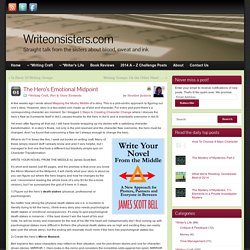
This is a plot-centric approach to figuring out one’s story. However, story is a two-sided coin made up of plot and character. For every plot point there’s a corresponding character arc moment. So I blogged 3 Steps to Creating Character Change where I discuss the hero’s flaw as it presents itself in Act I, causes trouble for the hero in Act II, and is eventually overcome in Act III. Reading For Writers 101: Character Change, part 2 - Writeonsisters.com. Last week’s lesson was about how Character Change makes a story more satisfying, and I evoked the good name of James Bond to make my point.

Audiences and readers, now more than ever, want characters who grow and evolve. 25 Things You Should Know About Character. The Inner Struggle: Guides for Using Inner Conflict That Make Sense. By Janice Hardy, @Janice_Hardy I sat in on an amazing workshop while I was at RWA that made something typically vague very clear and applicable.
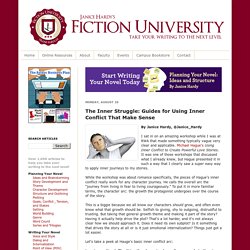
Michael Hague's Using Inner Conflict to Create Powerful Love Stories. It was one of those workshops that discussed what I already knew, but Hague presented it in such a way that I clearly saw a super easy way to apply inner journeys to my stories. While the workshop was about romance specifically, the pieces of Hague’s inner conflict really work for any character journey.
He calls the overall arc the “journey from living in fear to living courageously.” Creating Stunning Character Arcs, Pt. 1: Can You Structure Characters? Write Better: 3 Ways To Introduce Your Main CharacterWritersDigest.com. One of the biggest bugaboos in manuscript submissions is when the author doesn’t properly introduce the protagonist within the first chapter. Readers want to know quickly the protagonist’s sex, age and level of sophistication in the world of the story, and they want to relate to the character on an emotional level. Readers’ interest in the protagonist has to be earned, in other words. Why Your Hero Absolutely Must Pet the Dog. 10 Reasons Why Your Hero Needs Flaws - WRITERS HELPING WRITERSWRITERS HELPING WRITERS. Hi everyone! 6 Things Your Characters Want-and 4 Ways to Keep Them Frustrated. We authors are pretty mean folk. Here we are, creating characters whom we love almost as much as our family and friends–and yet every day, on every page, we make them suffer.